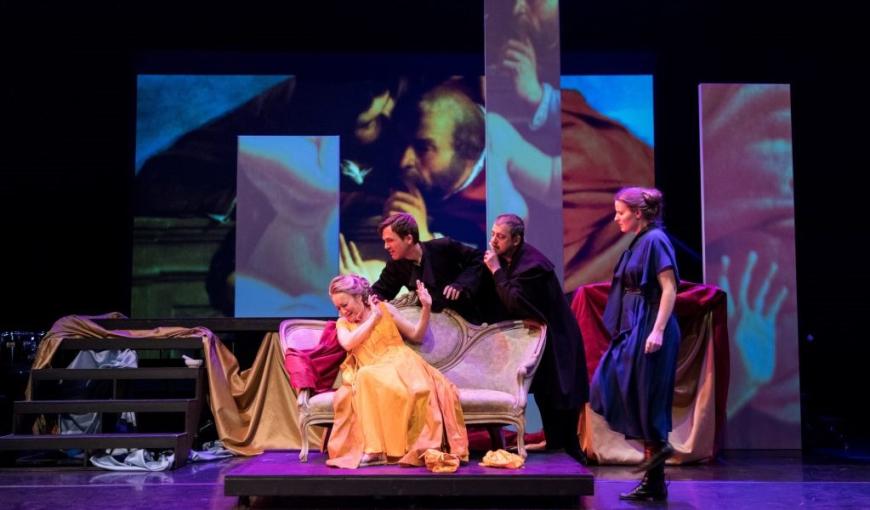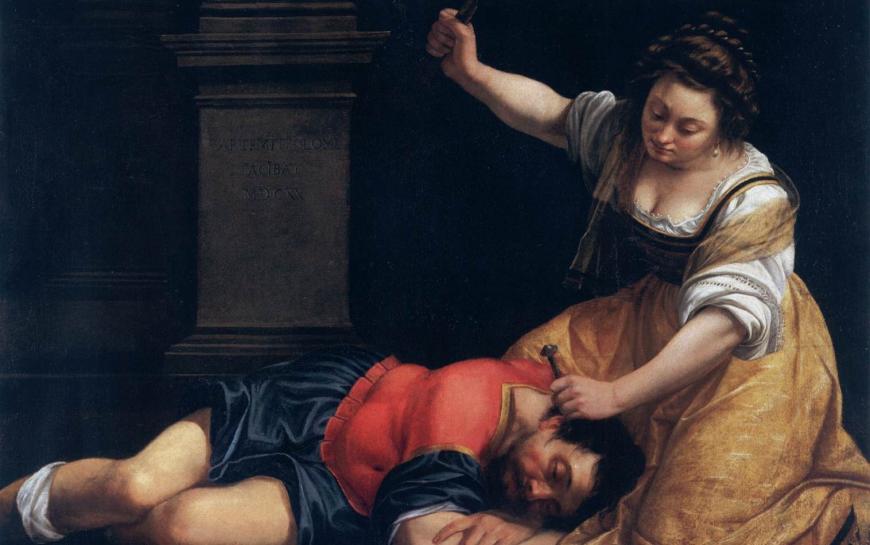
The title of SF Classical Voice’s 2019 review of Laura Schwendinger and Ginger Strand’s opera Artemisia says it all: “Left Coast Chamber Ensemble Proves That Great Opera Needn’t Be Grand.” It can, however, be difficult to attract notice that way.
Fortunately for Schwendinger, 61, who is professor of composition at University of Wisconsin, Madison, people heard about the opera, which, in its orchestral version, was performed in concert in New York City by Trinity Wall Street NOVUS, also in 2019, and was reviewed in The New York Times.
And now, there’s more notice coming Artemisia’s way. Earlier this year, Schwendinger (along with librettist Strand) was named the winner of the American Academy of Arts and Letters’ 2023 Charles Ives Opera Award. The award carries with it $50,000 in prize money. Schwendinger won the prize over runners-up Missy Mazzoli and Royce Vavrek, so she’s in pretty rarified company. Judges on the panel included distinguished composers John Harbison (chair), Anthony Davis, Tania León, Tobias Picker, and Shulamit Ran.

There is a bit of hometown pride in the award because Schwendinger is an alumna of both the San Francisco Conservatory of Music, where she did her undergraduate work, and UC Berkeley, where she received her doctorate, working with composers Olly Wilson and Andrew Imbrie. Her professional credentials since then have been impeccable, though she has yet to reach the level of recognition that her skill and creativity deserve.
Artemisia is about the 17th-century painter Artemisia Gentileschi, who is now famous for works such as Susanna and the Elders. But for many years, she was better known as the protagonist in a rape trial, winning a judgment against her rapist after enduring torture with thumbscrews. The libretto makes brilliant use of Gentileschi’s letters to tell this story in retrospect, and part of the development of the opera, Schwendinger said in a February interview, was to focus the piece on those letters. In 2018, at a residency at MacDowell, where the opera went through a major revision, “we cut some of the letters that felt more recitative-like in quality, and we expanded the emotional moments so that the arc felt much more satisfying.”
In a brilliant gesture toward universality, Schwendinger and Strand find a prominent place, both at the outset and in the final scene, for the aria “Che si può fare?” (What can be done?) by Barbara Strozzi, a contemporary of Gentileschi and a great composer (who likely was also raped in her youth and had a relationship with her assaulter that resulted in four children).
In another unhappy COVID story, “there were going to be scenes done as part of the Artemisia exhibit, which was a blockbuster show at the National Gallery in London.” Canceled, naturally. “What’s so great about this award,” Schwendinger went on, “is that with COVID hitting at that moment, it got in the way of the resonance that operas usually have [after the premiere], and so this award kind of wakes people up again” — which might, if the opera gods smile, result in future performances of the work.
Getting the award, reported Schwendinger, “was gobsmacking. That panel of judges, you know, they’re my heroes, a lot of them, all great composers and amazing people, and for them to have voted unanimously for Missy and me was extraordinary. I mean, I can only imagine what else was nominated, but over the last four years, there have been some extraordinary operas written.”
Schwendinger excitedly confessed to being “obsessed with” plastic arts as part of the genesis of Artemisia. “We are both art lovers, Ginger and I, and whenever we travel, the first place we go is to art museums. [Gentileschi] was kind of an introduction to a whole panoply of women artists of that time who, like [Francesca] Caccini or Strozzi, were almost forgotten. I think of Élisabeth Vigée Le Brun, who painted every kind of queen and king and so on in France, and yet her paintings are few and far between, even in the Louvre.”

Schwendinger continued: “However, there are places that are coming to grips with how great these female artists were. This last time that I visited the Rijksmuseum in Amsterdam, I was able to talk to one of the curators, who said, ‘We decided a few years ago, because we had so many holdings by great female artists, that we were going to make sure they were in every single room.’ And so, as you walk through the Rijksmuseum, every single room has some amazing female artist you’ve never heard of before. It’s astounding.”
Of course, we know the reason that the artists were ignored, the same way we know why, until comparatively recently, female composers were ignored. But Schwendinger is optimistic on this point. “What’s interesting about this moment is that women’s operas [have come to the fore], partly because Opera America made this push with the Toulmin Fund so that many young and middle-aged women have been given the chance to write opera through this award. [Artemisia received a 2016 Discovery Grant through Opera America’s Opera Grants for Women Composers program, supported by the Virginia B. Toulmin Foundation.] That was the genesis, in a way. Because hearing Trinity do that performance allowed us to hear it come alive.
“And in this period, there are many amazing operas written by women. The list is so incredibly long. I think people, even at the [Metropolitan Opera], are waking up to the fact that [opera] is such a dramatic form and new opera has something to say and people are excited by it.”



